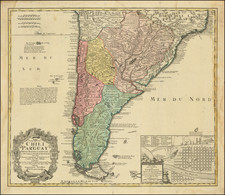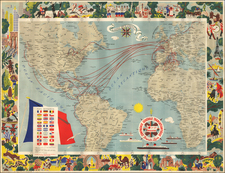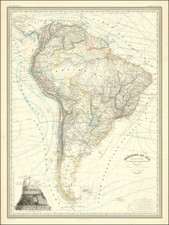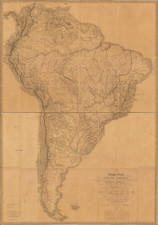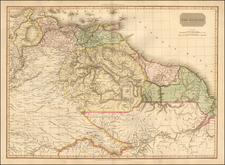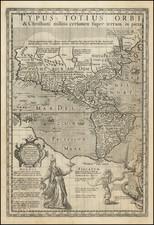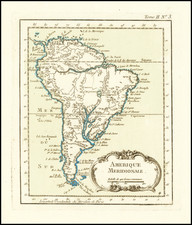Detailed attractive map of the southern portion of South America, including a large inset of Santiago, Chile, published in Nuremberg.
The map is based upon the work of Guillaume De L'Isle and includes information from the explorations of de Brouwer, Narborough and de Beauchesne. The cartouche credits Luis Amadeo Francisco Frezier for plan of Santiago, drawing upon his plan Santiago completed in 1712.
The map is extensively annotated and is illustrative of the fabulous detail and strong engraving quality of early 18th Century German cartographic publishers.
A rich decorative cartouche completes the map.
Johann Baptist Homann (1663-1724) was a mapmaker who founded the famous Homann Heirs publishing company. He lived his entire life in Bavaria, particularly in Nuremberg. Initially, Johann trained to become a priest before converting to Protestantism and working as a notary.
In 1702, Johann founded a publishing house that specialized in engravings. The firm flourished, becoming the leading map publisher in Germany and an important entity in the European map market. In 1715, Johann was named Imperial Geographer to the Holy Roman Empire by Charles VI and made a member of the Prussian Academy of Sciences. Most importantly for his business, his reputation and contacts gained him imperial printing privileges which protected his publications and recommended him to customers. Johann is best known for this Grosser Atlas ueber die ganze Welt, or the Grand Atlas of the World, published in 1716.
After Johann died in 1724, the business passed to his son, Christoph (1703-1730). Upon Christoph’s early death, the company passed to subsequent heirs, with the name of the company changing to Homann Erben, or Homann Heirs. The firm continued in business until 1848.

